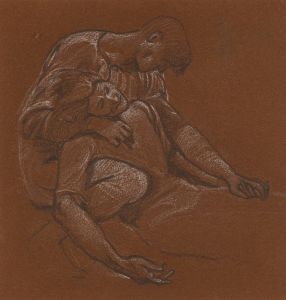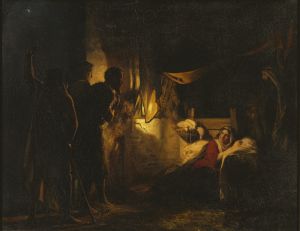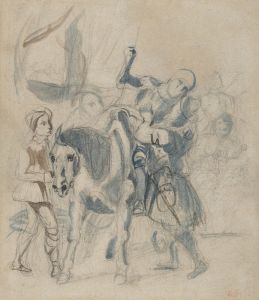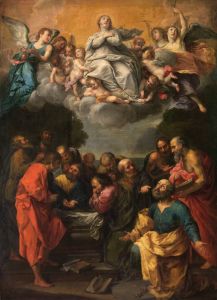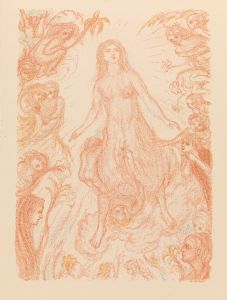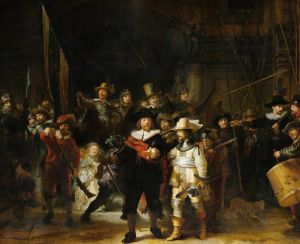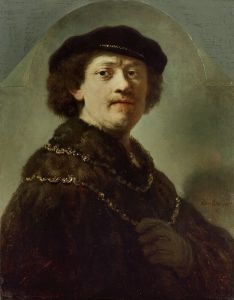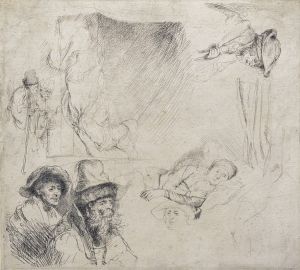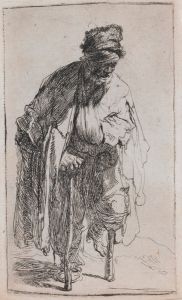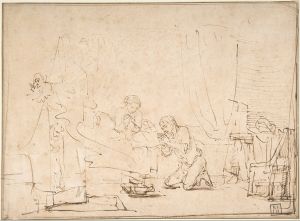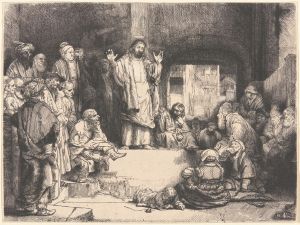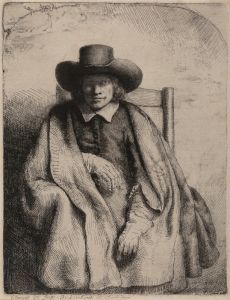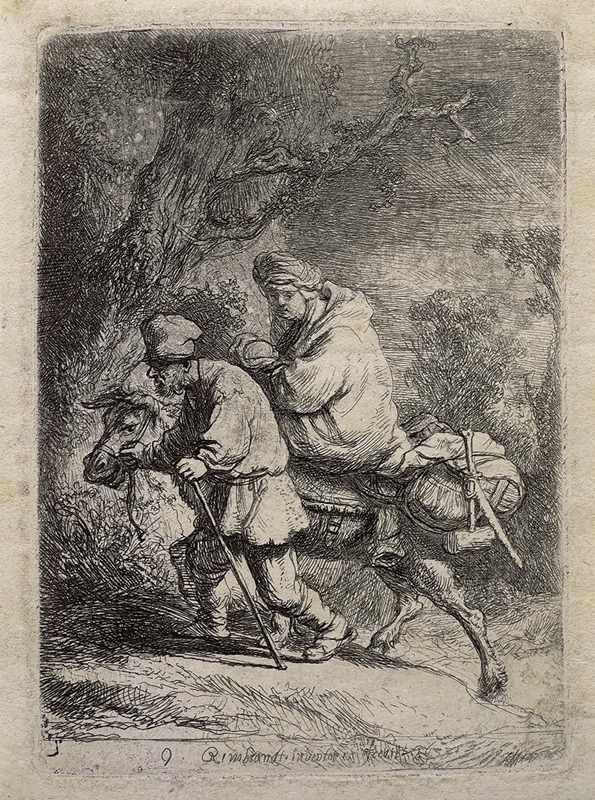
The Flight into Egypt
A hand-painted replica of Rembrandt van Rijn’s masterpiece The Flight into Egypt, meticulously crafted by professional artists to capture the true essence of the original. Each piece is created with museum-quality canvas and rare mineral pigments, carefully painted by experienced artists with delicate brushstrokes and rich, layered colors to perfectly recreate the texture of the original artwork. Unlike machine-printed reproductions, this hand-painted version brings the painting to life, infused with the artist’s emotions and skill in every stroke. Whether for personal collection or home decoration, it instantly elevates the artistic atmosphere of any space.
Rembrandt van Rijn, one of the most renowned artists of the Dutch Golden Age, is celebrated for his masterful use of light and shadow, as well as his profound ability to convey human emotion. Among his many works, "The Flight into Egypt" is a notable painting that reflects his skill in biblical storytelling through art. This painting is part of a broader tradition in European art that depicts the biblical narrative of the Holy Family's escape to Egypt, as recounted in the Gospel of Matthew.
"The Flight into Egypt" by Rembrandt is believed to have been created around 1627. This period marks the early phase of Rembrandt's career, during which he was developing his distinctive style. The painting is executed in oil on panel, a common medium for Rembrandt, allowing for detailed work and rich textures. The dimensions of the painting are relatively modest, which was typical for many of his works intended for private devotion or small-scale collections.
In this work, Rembrandt illustrates the moment when Joseph, Mary, and the infant Jesus flee to Egypt to escape King Herod's massacre of the innocents. The composition is notable for its dramatic use of chiaroscuro, a technique that Rembrandt mastered and is characterized by the strong contrast between light and dark. This technique not only adds a three-dimensional quality to the figures but also enhances the emotional intensity of the scene.
The painting captures a nighttime setting, with the Holy Family journeying through a dark, wooded landscape. A divine light illuminates the figures, symbolizing the presence and guidance of God during their perilous journey. This use of light not only highlights the central figures but also creates a sense of mystery and divine intervention, a hallmark of Rembrandt's religious works.
Rembrandt's depiction of the Holy Family is intimate and humanizing. Joseph is shown leading the donkey, on which Mary is seated, cradling the infant Jesus. The expressions and postures of the figures convey a sense of urgency and protection, emphasizing the vulnerability and humanity of the biblical characters. This approach reflects Rembrandt's interest in portraying biblical stories with a focus on human emotion and experience.
"The Flight into Egypt" is housed in the collection of the Musée des Beaux-Arts in Tours, France. It is one of several works by Rembrandt that explore the theme of the Holy Family's flight, showcasing his ongoing interest in this narrative throughout his career. The painting is an excellent example of Rembrandt's early work, demonstrating his emerging style and his ability to convey complex narratives through the interplay of light and shadow.
Overall, "The Flight into Egypt" exemplifies Rembrandt's skill in combining technical mastery with emotional depth, making it a significant work in his oeuvre and a valuable piece of art history.





